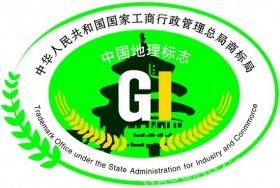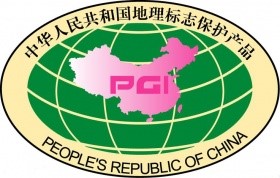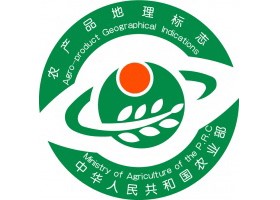The following important amendments/revisions are made to examination practice:
1. Where the examiner pointes out in a Notification for Divisional Application or in an office action that a divisional application (first-time divisional application) lacks unity and the applicant files another divisional application again (second-time divisional application) according to the examination observation of the examiner, the filing time of the second-time divisional application shall be determined based on the first-time divisional application asserted as lacking unity.
2. Amendments related to product design involving graphical user interfaces (Note: such amendments have already substantially been implemented for the past few months).
3. In an office action, when determining a technical feature contributing to the resolution of technical problem in a claim as common knowledge, the examiner usually has to provide evidence for proof (Note: it is necessary to wait until 1st November 2019 to see how CNIPA specifically implement this amendment).
4. The applicant may request a delayed examination of invention and design patent applications. The request for delayed examination of an invention patent shall be filed by the applicant at the same time as the request for substantive examination, but such request for delay shall take effect from the effective date of the substantive examination request. The request for delayed examination of design shall be submitted by the applicant at the same time as the application for the design is submitted. The delay period is one year, two years or three years from the date on which the request for delayed examination takes effect. After the expiration of the delay period, the application will be pending in order. When necessary, the Patent Office may start the examination process on its own initiative and notify the applicant, and the delayed examination period requested by the applicant is terminated.
(Source: CNIPA)
The full text of the “Administrative Measures for the Central Examination of Patent Applications (Trial)” is released
Recently, CNIPA issued the “Administrative Measures for the Central Examination of Patent Applications (Trial)” (hereinafter referred to as the “Measures”). The “Measures”, consisting of eleven articles, clarifies the applicable conditions and work contents of the centralized examination of patent applications and will be implemented on 30th August 2019.
The formulation of the “Measures” is aimed at implementing the requirements of the State Council on Several Opinions on Accelerating the Construction of Intellectual Property Power in the new situation.
The “Measures” points out that centralized examination is designed to enhance the understanding of the overall technology of patent application portfolios, improve the effectiveness of office actions, and improve quality and the efficiency of examinations.
(Source: CNIPA)
Banking Regulatory Commission, CNIPA: Expand IP Pledge Financing
In order to implement the work arrangements for the expansion of intellectual property pledge financing by the State Council executive meeting, on 25th September 2019, the China Insurance Regulatory Commission and CNIPA jointly held a telephone meeting to exchange their views on intellectual property pledge financing. Wang Zhaoxing, vice chairman of the China Insurance Regulatory Commission, and He Zhimin, deputy director of CNIPA, attended the meeting and delivered a speech. Liu Fushou, chief lawyer of the China Insurance Regulatory Commission, presided over the meeting.
Wang Zhaoxing requires bank insurance institutions and bank insurance supervision departments at all levels to conscientiously implement the work arrangements of the Party Central Committee and the State Council on accelerating the implementation of the innovation-driven development strategy and actively support technological innovation. It is also necessary to expand intellectual property pledge financing and provide full support for science and technology enterprises, private enterprises and small and micro enterprises.
First, it is necessary to fully understand the strategic value, commercial value, and market value of intellectual property rights such as invention patents, and fully understand the significance of intellectual property rights to the strategy of innovation-driven power. Second, bank insurance institutions should make use of the current favorable policies and laws to provide continuous financial support for scientific and technological progress by continuously exploring and innovating intellectual property pledge financing services. Third, bank insurance institutions and supervisory departments at all levels must concentrate on solving problems, adhere to reform, exploration and innovation, and achieve greater breakthroughs in the evaluation of IP values and turning IP assets into cash.
(Source: Sina Finance)
National technology transactions grew steadily in the first half of 2019
According to the statistics of the Torch Center of the Ministry of Science and Technology, in the first half of 2019, a total of 147,100 technical contracts were signed nationwide, with a turnover of 723.90 billion yuan, a year-on-year increase of 9.8% and 23.6% respectively. The national technology transaction continued to maintain a steady growth momentum.
According to the contract type, the turnover of technical service contracts in the four types of technology contracts was 365.89 billion yuan, ranking first among the four types of contracts, up 20.6% year-on-year; the turnover of technology development contracts was 264.55 billion yuan, an increase of 28.1%; the turnover of technology transfer contracts increased by 34.1% to 77.23 billion yuan; the technical consulting contract decreased from the previous year, with a turnover of 16.22 billion yuan.
According to the statistics of the technical field, the top three transactions are in the fields of electronic information, modern transportation and advanced manufacturing. Among them, the turnover of electronic information technology contracts continued to maintain a leading position of 226.63 billion yuan, an increase of 34.5%; the turnover in the modern transportation sector was 92.99 billion yuan, up 9.0%; the turnover in the advanced manufacturing sector was 80.22 billion yuan. Among all kinds of technical fields, the growth rate of technology contract turnover in nuclear application field ranked first, with a year-on-year increase of 1079.2% to 7.28 billion yuan.
(Source: website of Ministry of Science and Technology)
Verdict of the first patent extortion case: The principal offender was sentenced to four and a half years in prison for extorting profits from infringement lawsuits
On September 30, the Shanghai Pudong New Area Court made a first-instance judgment on a case called “the first case of patent extortion”. Li Xingwen, the principal of the case, used a number of companies he operated to hoard a large number of patents, and filed multiple litigations based on such patents which were never exploited. He repeatedly appealed to companies using similar patents to force the victims to pay him patent implementation license fee and other compensations. According to the court’s first judgment, Li Xingwen was sentenced to four years and six months’ imprisonment and a fine of 50,000 yuan for extortion.
In August 2018, the Shanghai Pudong New Area Procuratorate accused Li Xingwen and others of committing extortion and filed a public prosecution to the Shanghai Pudong New District Court. Since 2009, Li Xingwen has applied for a large number of patents in relevant fields in the name of Shanghai Kedou Electronic Technology Co., Ltd. (hereinafter referred to as “Kedou Company”) and Shanghai Benxing Electronic Technology Co., Ltd (hereinafter referred to as “Benxing Company”) operated by him. With such a patent arsenal, Li filed patent dispute litigations to the court to threaten the defendants to sign patent implementation license contracts, settlement agreement, etc. Taking Kedou Company as an example, Nandu reporter learned from Tianyan that the company’s patent application information reached 562, most of which were invention patents; there were also some utility model patents.
(Source: Tencent)
Dragon Special Report and Agency Practice
Analysis of China’s Three Geographical Indication Protection Systems
China has three systems for protection geographical indications: the geographical indication trademark legal protection system, the geographical indication product protection system, and the agricultural product geographical indication protection system. The legal protection system for geographical indication trademarks is supervised by the former Trademark Office of the State Administration for Industry and Commerce (after the State Council’s institutional reforms, it was incorporated into the China national intellectual property administration of the State Administration of Markets) in accordance with laws and regulations such as the Trademark Law. The protection system for geographical indication products is supervised by the General Administration of Quality Supervision, Inspection and Quarantine of the State Council (after the State Council’s institutional reforms, it was incorporated into the State Administration of Market Supervision) in accordance with the laws and regulations such as the Product Quality Law, the Standardization Law and the Import and Export Commodity Inspection Law. The agricultural product geographical indication protection system is supervised by the Ministry of Agriculture (after the State Council’s institutional reforms, it was incorporated into the Ministry of Agriculture and Rural Affairs) in accordance with laws and regulations such as the Agricultural Law and the Agricultural Products Quality and Safety Law.
With the gradual implementation of the institutional reform plan of the State Council at the central and local levels, the protection system for geographical indication marks and the protection system for geographical indication products are both under the governance of the General Administration of Market Supervision and Administration. How to integrate and divide the work between the two is a problem that needs further attention in the future. For the time being, these three geographical indication protection systems are parallel and independent, forming a geographical indication protection system with Chinese characteristics, and giving the geographical indications multiple protections from the judicial system and the administrative system. But there are also many differences between them.
(1) The protection objectives of the three systems are different.
The GI trademark registration system essentially protects geographical indications as a commercial mark, and its scope of rights is similar to that of ordinary registered trademarks. The main protection object of GI trademarks is derived from the Trademark Law. The main purpose of protection is to accurately distinguish the source of goods and prevent confusion or misidentification of commercial marks. There is no requirement for the quality of the product under GI trademark protection.
The GI product registration system essentially associates GIs with corresponding products and has certain standards for the quality of products using GIs. The main protection basis for GI products is derived from the Product Quality Law and the Standardization Law. The main purpose of protection is to ensure the quality and characteristics of GI products. That is, this system seeks to regulate the quality and standard consistency of products that use a geographical indication.
The registration system for geographical indications of agricultural products only protects products in the agricultural sector, as China is a major agricultural country. The main protection basis for agricultural products geographical indications system is derived from the Agriculture Law and the Agricultural Product Quality and Safety Law. The main purpose of protection is to ensure the quality and characteristics of geographical agricultural products and enhance the competitiveness of agricultural products market.
(2) The legal management bases of the three systems are different.
CNIPA mainly manages the registration and use of geographical indication trademarks in accordance with the Trademark Law.
The State Administration of Market Supervision mainly protects and manages geographical indication products in accordance with the Product Quality Law, the Standardization Law and the Import and Export Commodity Inspection Law.
The Ministry of Agriculture and Rural Affairs mainly protects and manages geographical indications of agricultural products in accordance with the Agricultural Law and the Agricultural Products Quality and Safety Law.
(3) The registration entities accepted by the three systems are different.
In addition to the relevant domestic organizations, associations and other organizations in China, CNIPA accepts applications of geographical indication certification marks and collective marks filed by applicants from foreigners and foreign enterprises (it is necessary to provide proof that the geographical indication and its name are legally protected in its country of origin).
State Administration of Market Supervision and Administration accepts geographical indication product applications from organizations designated by the people’s governments at or above the county level where the products are located. The applicant for foreign geographical indications products shall be the original applicant for geographical indications recommended by the competent department of geographical indications in the country or region of origin.
Ministry of Agriculture and Rural Areas accepts applications for registration of agricultural geographical indications filed by institutional organizations, farmers’ professional cooperatives, trade associations and other organizations selected according to relevant conditions by local people’s governments at or above the county level.
(4) The management norms and standards of the three systems are different.
Except for the requirements for the application documents for collective trademarks and certification trademarks of geographical indications and the rules governing the use of such trademarks, CNIPA does not specify the requirements for product quality, standards or reputation.
In the application materials for geographic label products, the State Administration of Market Supervision and Administration clearly stipulates the technical specifications for production (including product processing technology, safety and hygiene requirements, technical requirements for processing equipment, etc.), the popularity of products, product testing reports, product manufacturing, sales and historical origins, technical standards to be applied to special geographical marking products, etc.
In addition to the applicant’s qualification certificate, Ministry of Agriculture and Rural Areas has the following requirements for product certification of agricultural geographical indication: provide description of typical product characteristics and corresponding product quality appraisal reports, environmental conditions and production technology specifications, product quality and safety control specifications, regional scope deterministic documents and production geographical distribution maps, product physical samples or sample pictures, etc. It also calls for the establishment of quality control traceability system, requiring the holders and users of registration certificates of geographical indications products to be responsible for the quality and reputation of geographical indications agricultural products.
(5) The relationships between ownership and usufructs embodied in the three systems are different.
CNIPA issues geographical indication certification marks and collective marks. The trademark ownership of the certification mark is separated from the right to use the trademark, and the trademark registrant cannot use the certification mark by itself; collective marks can be used by anyone being a member of the registrant, but they must not be used by non-collective members.
The GI products of the State Administration of Markets Supervision shall be submitted to the local quality and technical supervision bureau or the Entry-Exit Inspection and Quarantine Bureau by the producers within the scope of production of the GI products and shall be examined by the Provincial Quality and Technical Supervision Bureau or the Direct Entry-Exit Inspection and Quarantine Bureau. After being examined and registered by the AQSIQ, the applicant is allowed to use the GI product-specific mark on its products.
The agricultural products of the Ministry of Agriculture and Rural Agriculture shall be authorized to use after the registration certificate holder and the business unit or individual signs the agricultural product geographical indication use agreement; the quantity, scope and related responsibilities of use shall be stated in the agreement.
(6) The levels of protecting geographical indications given by the three systems are different.
The legal protection of trademarks of geographical indications by CNIPA is derived from the Trademark Law enacted by the Standing Committee of the National People’s Congress. In comparison, the protection of geographical indication products by the State Administration of Markets and the protection of geographical indications of agricultural products by the Ministry of Agriculture and Rural Affairs stem from the regulations of various departments. According to the level of validity of the law, the level of effectiveness of trademark protection for geographical indications by CNIPA is higher than the other two administrative protection measures.
In short, regardless of the protection mode, protected geographical indication products have common characteristics such as regionality of production, product uniqueness, quality difference, variety scarcity, process inheritance, long-term cultural context, naming geography, public use property and specificity characteristics. For the same product, as long as the registration or registration conditions of the above three protection modes can be satisfied at the same time, the same applicant can simultaneously apply for the protection of the geographical indication trademark registration, the geographical indication product registration and the agricultural product geographical indication registration.
Attachment: Special signs for geographical indications under three different protection systems:

GI trademark special mark

GI product special mark

Agricultural product GI mark
(Author: Law Department, Lawyer, Zhang Yu)
If you have any questions, please contact us:
Tel: 0086-10-82252547
Fax: 0086-10-82250563
Email: marketing@dragonip.com
